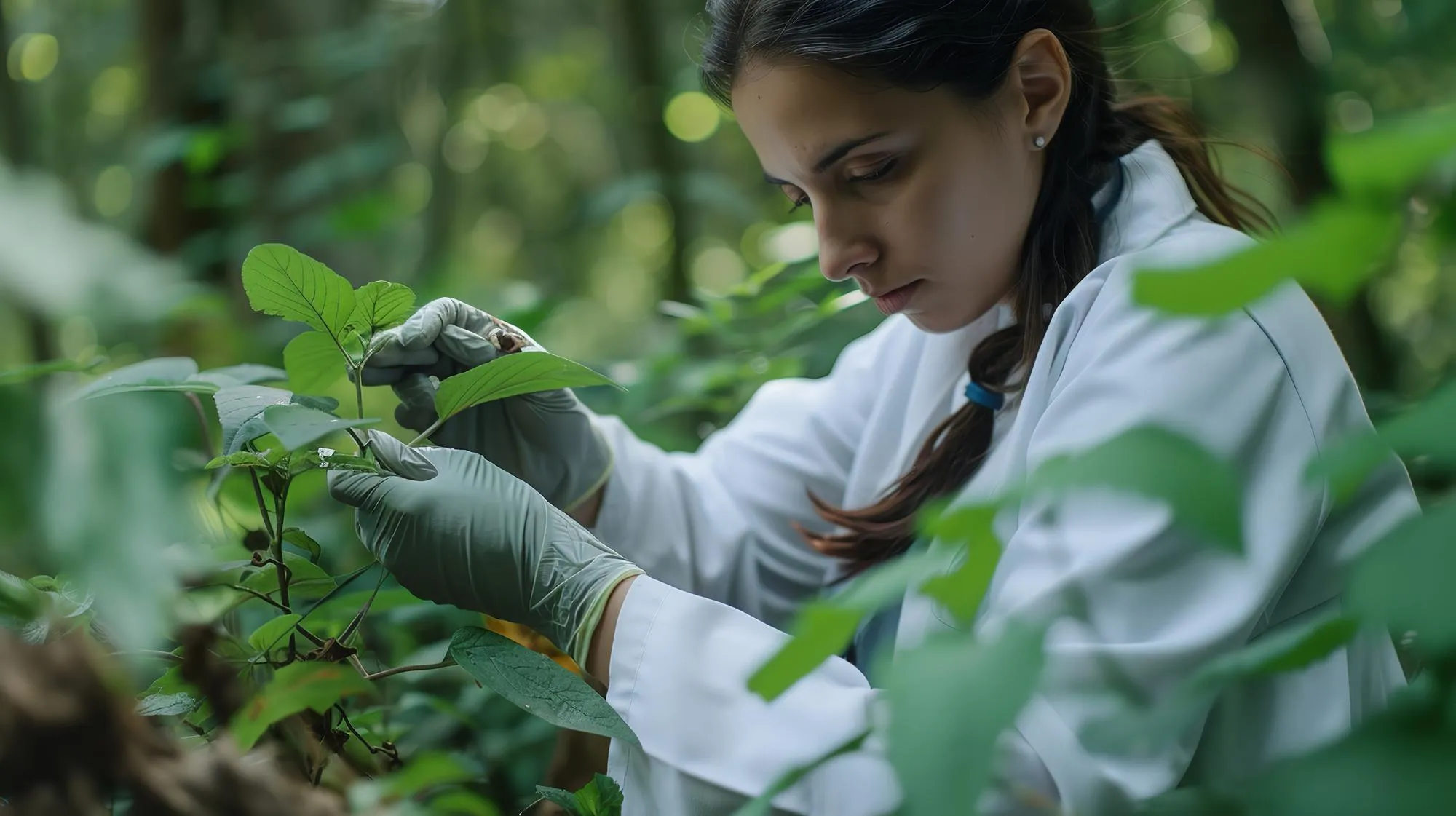In the January 2024 edition of ‘Theoretical Population Biology’, a riveting study has shed light on the delicate balance within mutualistic metacommunities through an innovative modeling approach that dovetails spatial dynamics and interaction networks. The team of researchers from the University of Grenoble Alpes and the Center for Infection and Immunity of Lille has introduced a paradigm to foresee the threshold for metacommunity persistence, a pivotal concept they termed ‘metacommunity capacity’. Their findings, published under DOI: 10.1016/j.tpb.2024.01.001, have far-reaching implications for the conservation of ecosystem services and the prevention of biodiversity loss.
Evolving the Metapopulation to the Metacommunity
The concept of metapopulation, which has been a cornerstone of ecological understanding, indicates a group of spatially separated populations of a species which interact at some level. However, this concept falls short when considering the complexity of ecosystems consisting of multiple interdependent species. Thus, the transition to the metacommunity framework, which encompasses various species and their interactions, has been a significant leap forward. Within this framework, the study proposes a model that uncovers the sinews connecting the spatial and interactive threads of a metacommunity’s survival fabric.
The Model’s Methodology and Discoveries
The model developed by Marc Ohlmann, François Munoz, François Massol, and Wilfried Thuiller, integrates mutualistic interactions—beneficial relationships between different species—into metacommunity dynamics. Under the assumption that all species have consistent colonization and extinction parameters, their model reveals a stark threshold that separates a bustling ecosystem from a landscape of extinction.
Further exploration indicates that not all network structures are born equal in nurturing mutualistic metacommunities. The researchers found that spatial networks with weak modularity, coupled with interaction networks that follow a power-law degree distribution, tend to provide a more favorable setting for the metacommunity’s long-term persistence. This synergistic configuration suggests that both the pattern of species distribution across space and the intricate web of their interactions can significantly influence ecosystem sustainability.
Implications for Ecology and Conservation
The implications of this research stretch beyond theoretical ecology. With the looming threats of habitat fragmentation and climate change, understanding the dynamics of metacommunities becomes paramount. The ‘metacommunity capacity’ threshold acts as a tool for conservationists and environmental planners to assess the viability of ecosystems and guide effective interventions.
This threshold can potentially serve as a barometer for ecosystem health, allowing for a pre-emptive course of action against the catastrophic effects of widespread species loss. The study’s predictive model could enable better management of natural reserves, restoration of disrupted habitats, and even urban planning, ensuring green spaces are designed to support the complex interplay of species interactions.
Future Directions and Challenges
However, the model posits several assumptions such as equal colonization and extinction rates across species, which may not hold in real-world scenarios. The challenge now lies in tweaking this elegant theoretical tool to accommodate the messy nuances of nature’s workings.
Moreover, the next stages in research stand to integrate other forms of species interactions, like predation and competition, which are anticipated to introduce more layers of complexity to the metacommunity dynamics. The endeavor to incorporate such diverse interactions could revolutionize the way we understand and forecast ecological resilience.
Community Resonance and Feedback
The scientific community has welcomed the findings with enthusiasm, sparking discussions on the model’s integrative approach. “What we’re seeing here,” remarks Dr. Emily Zhao, a theoretical ecologist not involved in the study, “is a potential game-changer that harmonizes two main axes of ecology. It’s the kind of work that compels us to re-evaluate how we comprehend ecological networks.”
However, some experts also caution about the weight of the model’s assumptions and stress the need for empirical validation. “The real test,” Dr. Zhao adds, “will be applying this model to actual ecosystems and seeing if it holds up.”
Call to Action
With the survival of many species hanging precariously in the balance, the urgency for applying such theoretical advancements to practical conservation strategies cannot be overstated. The study and its outcomes present an optimistic beacon for the future of biodiversity, guiding the hand that seeks to mend the cushioning webs of life upon which we wholeheartedly depend.
References
1. Ohlmann, M., Munoz, F., Massol, F., & Thuiller, W. (2024). Assessing Mutualistic Metacommunity Capacity by Integrating Spatial and Interaction Networks. Theoretical Population Biology, 156, 22-39. https://doi.org/10.1016/j.tpb.2024.01.001
2. Hanski, I. (1998). Metapopulation dynamics. Nature, 396, 41-49.
3. Bascompte, J., & Jordano, P. (2007). Plant-Animal Mutualistic Networks: The Architecture of Biodiversity. Annual Review of Ecology, Evolution, and Systematics, 38, 567-593.
4. Pillai, P., Gonzalez, A., & Loreau, M. (2011). Metacommunity theory explains the emergence of food web complexity. Proceedings of the National Academy of Sciences, 108(48), 19293-19298.
5. Thébault, E., & Fontaine, C. (2010). Stability of ecological communities and the architecture of mutualistic and trophic networks. Science, 329(5993), 853-856.
Keywords
1. Metacommunity Capacity
2. Spatial Interaction Networks
3. Theoretical Ecology Research
4. Mutualistic Metacommunities
5. Biodiversity Conservation Strategies
This comprehensive study not only propels us to revisit the fragility and connectivity that underpin our ecosystems but also provides the quantitative tools necessary to nurture and safeguard the biodiversity that remains one of our most precious collective heritages.
